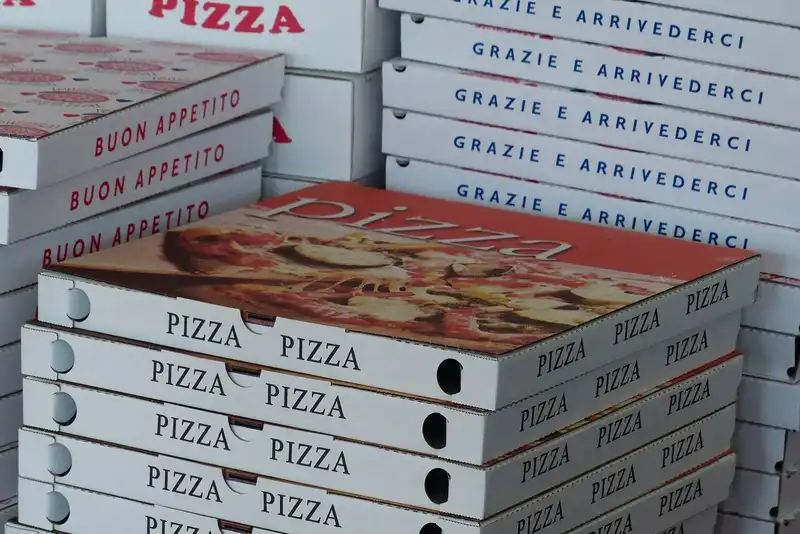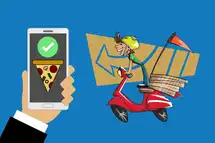What are restaurant technologies?
Technology at restaurants is constantly evolving. From ordering to payment to table reservations, restaurants need to keep pace with change. Technology is playing a larger role in the way restaurants operate. From new software systems to new mobile apps, restaurant technology is expanding and changing. In the restaurant industry, there's no end to the number of ways technology can be used to make operations run more smoothly, more efficiently, and with more transparency. From POS systems that reduce wait times and increase sales to table reservation apps that make it easy for customers to make reservations, restaurant technology is as varied as the restaurants it operates within.
Digital Trends in Restaurant Technologies- Transforming the Restaurant Industry
Introduction To The Restaurant Technologies

Restaurant technology is the suite of dedicated and sophisticated technology that helps commercial kitchens save time, money, and labor. In the old days, the running of restaurants involved human effort to get order data, transaction history, and performance reports. Modern restaurant technologies are cloud-based and automated.
An example of modern restaurant technology, for example, is the cloud-based restaurant POS system. It relies on remote servers or a network of computers hosted by the world wide web to store and process data. These are not only convenient but corrupt-proof and secure.
The Rise of Restaurant Technologies
According to a study conducted by Mckinsey and Company, digital maturity, great online ordering presence, digital loyalty programs, and strong customer relationship management (CRM), have been the solace for restaurants during the COVID-19 crisis. Digital engagement among customers has increased manifold during this time.
According to experts, high-tech solutions and services will continue to be the mainstay post-COVID for restaurants to stay in the business. Over 90,000 restaurants have shut down in the U.S. since the pandemic. Around 6 million people lost their jobs.
But there is a silver lining. One among them is the optimum use of restaurant technologies. Currently, restaurants use creative adaptations of menus, point of sale services, delivery options, and take-out. They have also upgraded their technological abilities by implementing customer-friendly mobile apps and other solutions which include next-gen restaurant management systems.
Your one stop shop for the latest news
Subscribe and stay informed about everything restaurant and food related!
How Restaurant Technologies Are Transforming The Restaurant Industry?

Restaurants are evolving in a big way, thanks to technological advancements in the restaurant industry. To be successful in today's world, a restaurant should be agile and adapt fast to change.
According to the National Restaurant Association, around 85% of operators already use tech solutions for their daily operations. Restaurants can no longer move ahead with their business only on the back of food quality. They have to hire the right staff, provide training to employees, improve guest experience, and make the best decisions possible. Technology plays a vital role in achieving this.
Startups like UberEats are setting an example for how technology can open up new profit streams. Instead of bringing customers to the food, restaurants can take food to the customers. These restaurant technologies can promote your menu in different places that are not otherwise viable. This boost is very important to keep operations smooth and improve customer experience, both of which will increase profits.
Restaurants have plenty of data available to them in their restaurant management system. Technology has made this possible. All an operator needs to do is read this data to make better business decisions. Software like Zip Forecasting or ZipPOS Dashboard, for example, helps a business understand its data through advanced analytics, helping it make the right business decisions.
Mobile Ordering Restaurant Technologies

Mobile ordering isn't a novel concept. However, the COVID-19 epidemic made it a secure payment mechanism with little or no human involvement. The pandemic has been a boon for restaurant mobile ordering. More people downloaded restaurant apps to order food and signed up for various loyalty programs as a result of it. In the last few months, restaurants have seen a considerable increase in mobile app usage.
Customers like mobile ordering because it allows them to enjoy a more personalized experience. Customers can examine their previous orders and repeat them, customize the order, or check for new menu options with a single click using mobile apps or mobile ordering technology. Through restaurant technologies like mobile apps, restaurant operators can present their customers with their latest menus and unique mobile deals to offer them a great customer experience, even if they can't give them the feel of table-side ordering.
These restaurant technologies have given the restaurant sector new ways to increase revenue. As a result of the epidemic, more restaurants are implementing mobile ordering capabilities to retain customers and increase profits.
Table Delivery Systems

In a traditional restaurant, orders are taken by waiters. They deliver food once it is ready. The customer then pays the bill to the cashier. This method relies on huge manpower for reservation, food ordering, food delivery, and billing. With the advent of restaurant technologies, owners have found ways to improve their service quality.
In a large restaurant, this coordination between waiters and the kitchen is a challenge. It's here that a table delivery system gains significance. An automated table delivery system makes this process hassle-free. Once the customer reaches the restaurant, he/she can place the order digitally through touch screen or app at their table.
This order will be communicated to the kitchen via a wireless medium. It will be automatically updated in the central database. A similar online display system will be available in the kitchen as well. The kitchen staff prepares the food according to the customer's order. When the food is ready, the waiter will be informed via a notification and he/she can deliver it to the customer's table. The customer can pay the bill via a touchscreen and leave the place.
Want up to date info on restaurant technologies?
Subscribe and stay informed about everything restaurant and food related!
Mobile Payment Options
Cash, credit card, and debit cards are the most popular payment methods used by restaurants. But, restaurants, in their path to diversify payment options, are also accepting popular mobile wallet apps. According to restaurant technology statistics, the mobile payment market will reach $13,979 billion in 2022.
Mobile payments are a kind of secure transaction that happens through a phone or a mobile device. They are enabled by apps that contain debit and credit card details to do digital payments using a mobile device. Users download a mobile wallet app and then add debit or credit card details, which are stored safely by the provider.
Popular mobile payment options for restaurants are-
1. Mobile wallets-
These allow customers to pay without their bank cards. The card information is stored on the mobile device and this is transferred to POS devices when the payment happens. Mobile wallets are used for contactless payments and may require fingerprint scanning or a PIN entry. Mobile wallets are secure as they use encrypted technology. Apple Pay, Google Pay, and Samsung Pay are popular examples.
2. NFC- NFC means near-field communication. Digital wallets and soundwave payments use NFC. This is similar to Bluetooth. But NFC has a shorter range and is secure as it has a private connection between the phone and payment terminal. NFC works by encrypting data and processing it immediately. It is faster than traditional chip and pin technology.
3. QR codes- Also known as quick response codes, it involves directing users to a URL, where they can pay securely. QR codes are black and white boxes with a coded pattern. The phone picks up this pattern and stores it on the server. Most restaurants include QR code payments in their cash register for customers to scan and pay easily. Restaurantslife Features offer details on different types of mobile payments and cover how they are implemented.
Top Three Trends in Restaurant Technologies
1. Rise of cloud kitchens
One of the most important new technologies in restaurants is the cloud kitchen an off-premise revenue generator. Restaurants have started to implement cloud kitchens out of their current premises. Their success depends on food quantity and consistency. Automation also helps simplify cloud kitchen operations. Other benefits of technology in restaurants include ease of experimenting.
2. Shift from automation to robotics
Currently, restaurant technology companies are busy building robots for different kinds of operations. They are adopting technology to replace humans with robots to avoid manual errors, combat large staff turnover rates, reduce hiring, and so on. Many restaurants have started using robots for food preparation which include flipping burgers and making cocktails.
3. Voice technology for orders
Voice technology will be another trend to watch out for. Major food chains are increasingly making use of virtual assistants like Alexa and Google Assistant in their operations. These VAs help customers place orders and provide feedback through voice commands.
Restaurantslife provides insights into other restaurants technologies that are transforming the restaurant industry, from workforce management to customer relationship management. It's time to allow technology to take you places.
Find out more about emerging technology in the restaurant industry
Subscribe and stay informed about everything restaurant and food related!



